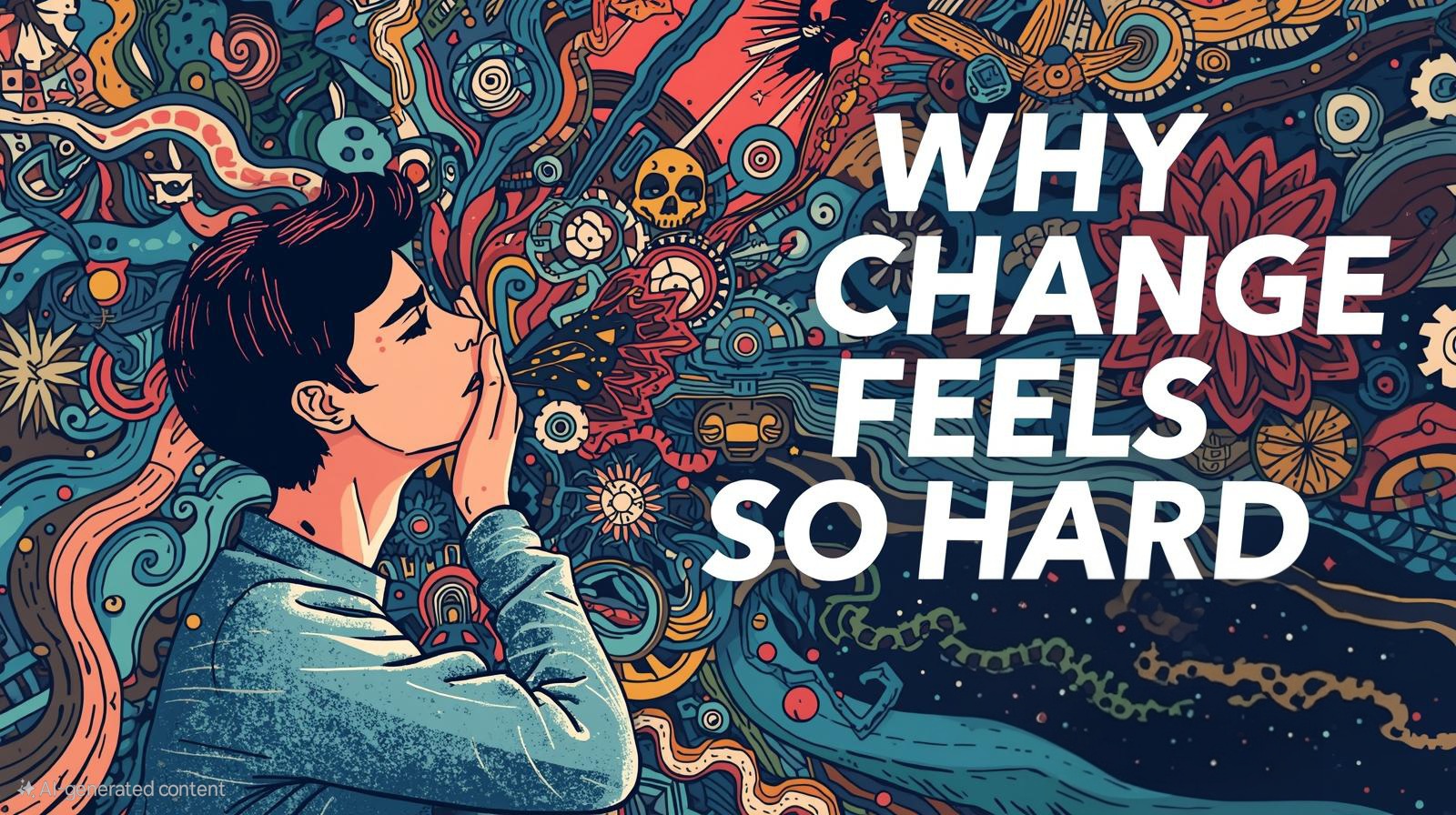Why Change Feels So Hard – And How to Make It Stick

You’ve been there. You’ve promised yourself things will be different. You’ve set goals, made plans, even felt fired up about the change you want to make. And then — somehow — you find yourself right back where you started.
The usual conclusion? I’m lazy. I’ve got no discipline. I just can’t do it.
Here’s the truth: you’re not lazy, broken, or weak. You’re going up against something powerful — your brain. And your brain is wired for safety, not change.
Want to listen on your preferred player?
Why Your Brain Fights Change
Your brain’s number one job is survival. That means it craves predictability and the familiar — even if the familiar is toxic, stressful, or clearly not working for you.
To your brain, sticking with the same old routine feels “safe.” Trying something new feels like a threat. That’s not sabotage. It’s biology.
Think about a habit you’ve tried to break. Maybe doom-scrolling late at night, saying yes when you want to say no, or keeping quiet when you’d rather speak up. Even if the habit isn’t serving you, it gives you something — comfort, distraction, control. Your brain doesn’t want to give that up easily.
Change Challenges Your Identity
Here’s the deeper layer. Changing your behaviour also means challenging your identity.
If you’ve always been the peacemaker, then setting boundaries feels like betraying who you are. If you’ve always stayed quiet to avoid conflict, speaking up feels wrong on every level.
It’s not just about breaking a habit. It’s about breaking the rules you’ve lived by for years — the ones that helped you stay accepted, safe, or liked. That’s why it feels so uncomfortable.
And sometimes, it even feels like grief. You’re letting go of an old version of yourself — even if that version was struggling.
Awkward is a Green Light
Here’s the bit most people miss: real change doesn’t feel good at first. It feels awkward, messy, even wrong. And that’s not a red flag — it’s a green light.
That tension you feel? That’s your brain recognising something different is happening. That’s exactly what you want. Because difference is the path to change.
So stop asking, Why is this so hard? Start asking, What am I learning right now?
How to Work With Resistance (Not Against It)
You can’t brute-force change with willpower alone. It’s not about toughness — it’s about strategy. Here’s what works:
1. Shrink the task. If it feels overwhelming, make it smaller.
Want to start journalling? Write one sentence.
Want to move more? Try two minutes of exercise.
Want to cut down screen time? Put your phone in another room for 10 minutes.
Small = safe. Safe = sustainable.
2. Reset, don’t restart. Slip-ups are part of the process. Missing a day doesn’t put you back at square one. You don’t need perfection — you need persistence.
3. Challenge “normal.” Familiar doesn’t equal right. It just means rehearsed. Teach your brain new normals by showing up consistently, even when it feels strange.
Resilience Beats Perfection
The people who make change stick aren’t the ones who do it flawlessly. They’re the ones who recover.
You will mess up. You will slip. That’s not the end — unless you decide it is.
Confident changers don’t spiral. They reset. They reframe. They say, “Today was rough, but I’m still in the game.”
It’s not about never falling. It’s about getting up again and again until the new pattern becomes part of you.
This Week’s Action Plan
Here’s how to put this into practice:
1. Name the habit. Be honest about the thing you keep getting pulled back into.
2. Shrink it down. Find the tiniest version of the change you can try today.
3. Catch the identity clash. What old label are you scared to let go of? Write it down.
4. Reframe a slip. When it happens — and it will — say, This is part of the process.
5. Practise recovery. The goal isn’t flawless execution. It’s bouncing back.
The Bottom Line
Change isn’t about fixing who you are. It’s about evolving who you’re becoming. And yes, it feels awkward. Yes, it feels messy. But that’s how you know you’re on the right track.
So when it feels hard — remind yourself: it’s not failure. It’s your brain doing what it always does. And the more you show up, the more you teach it that this new way is safe.



